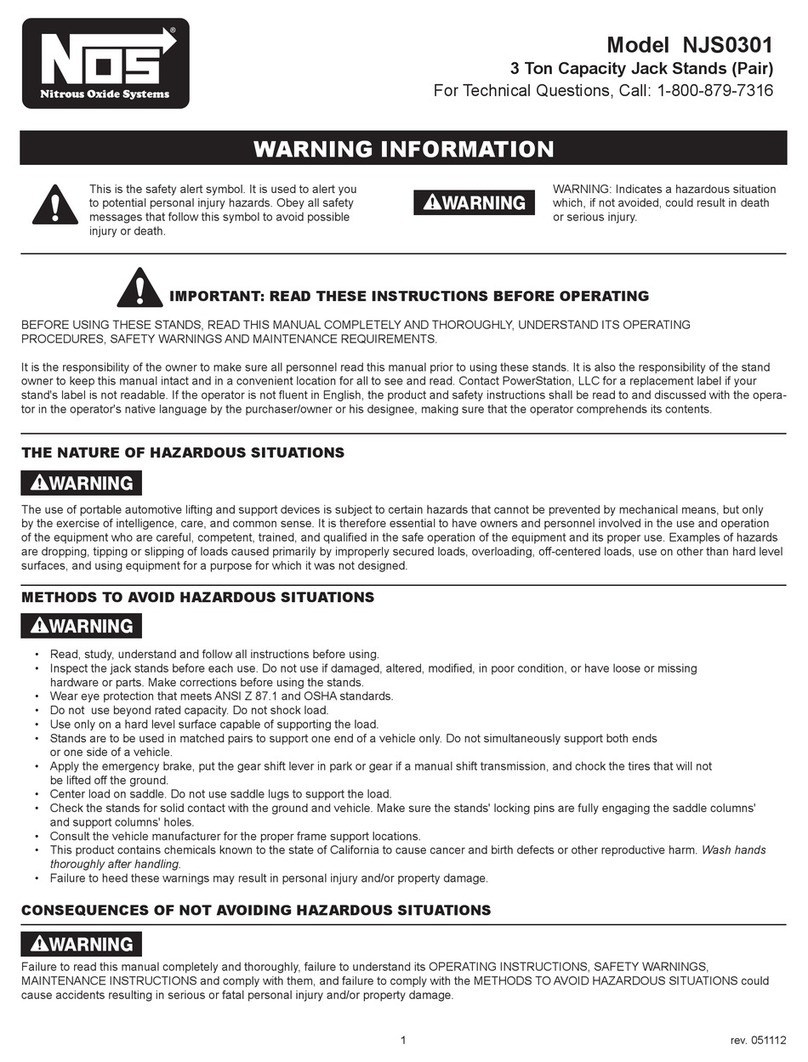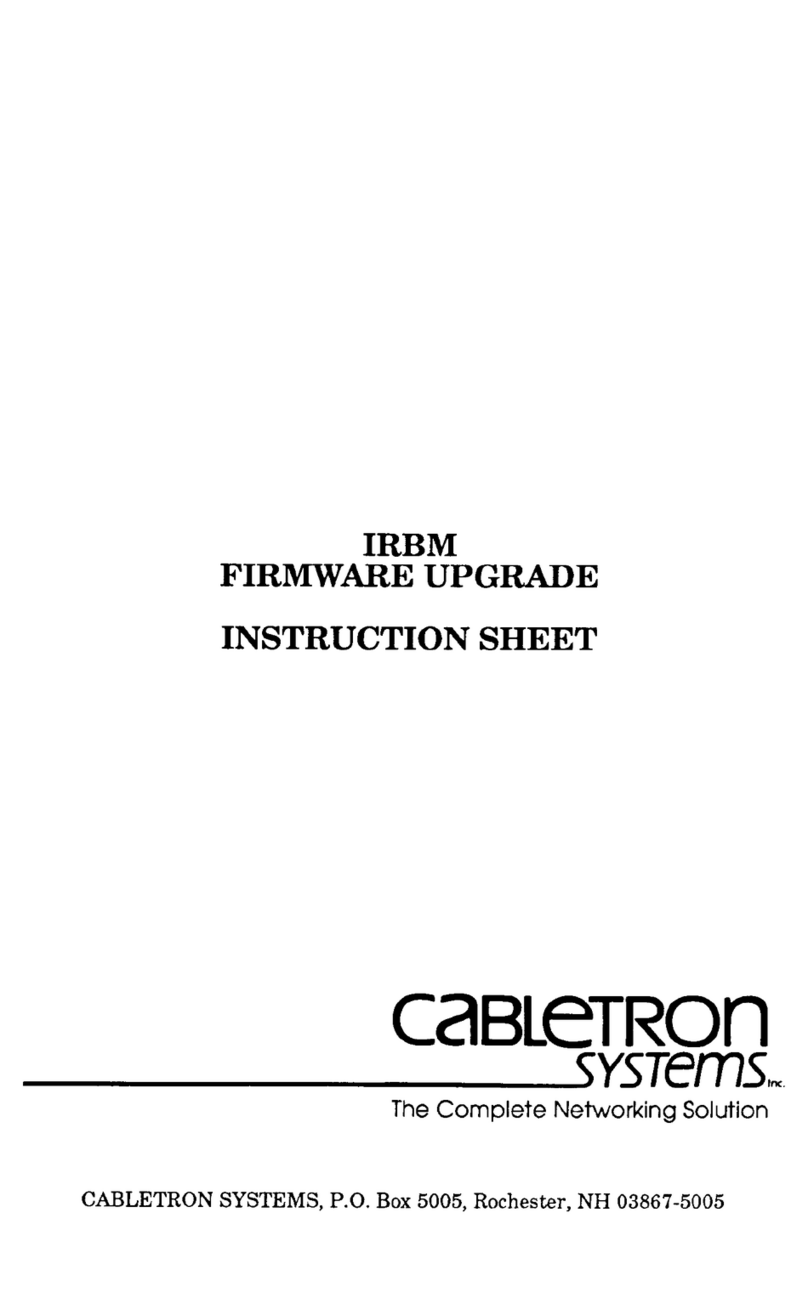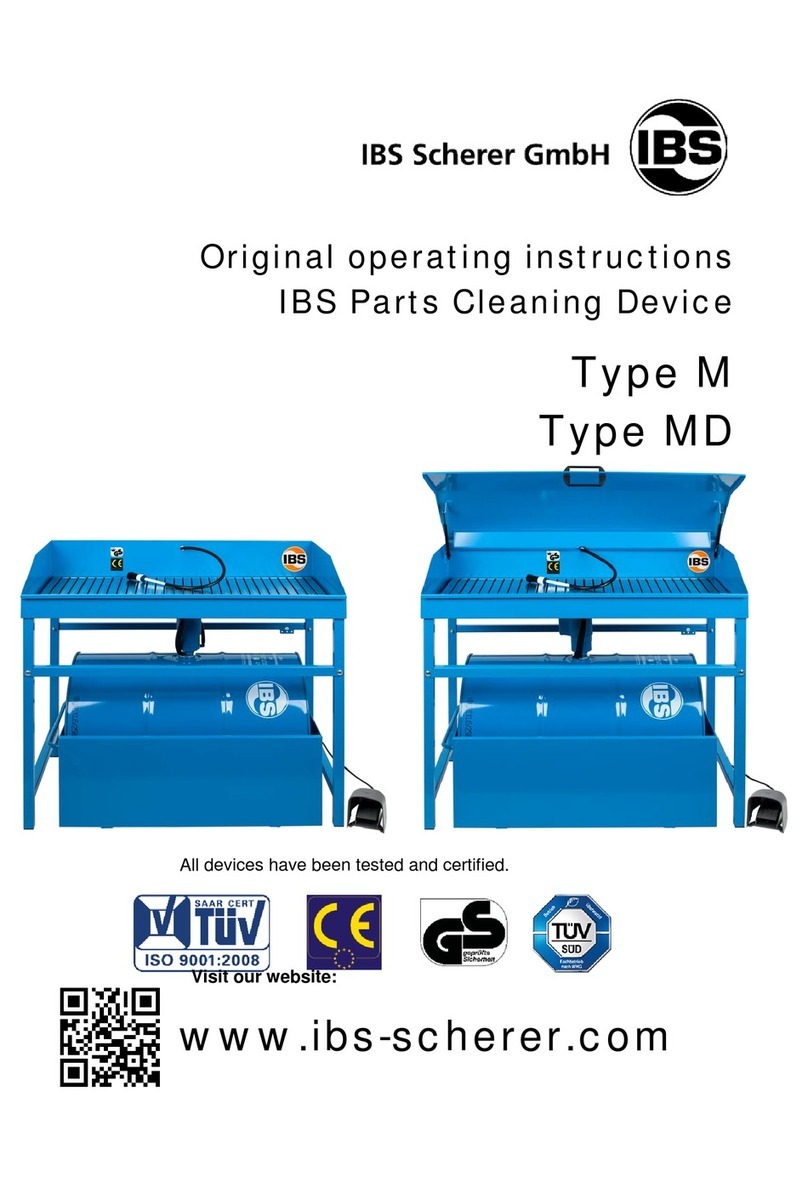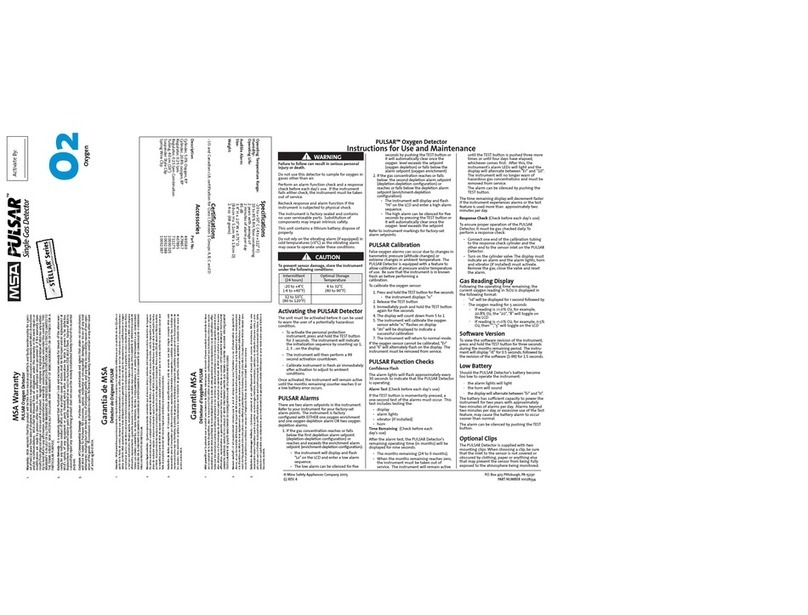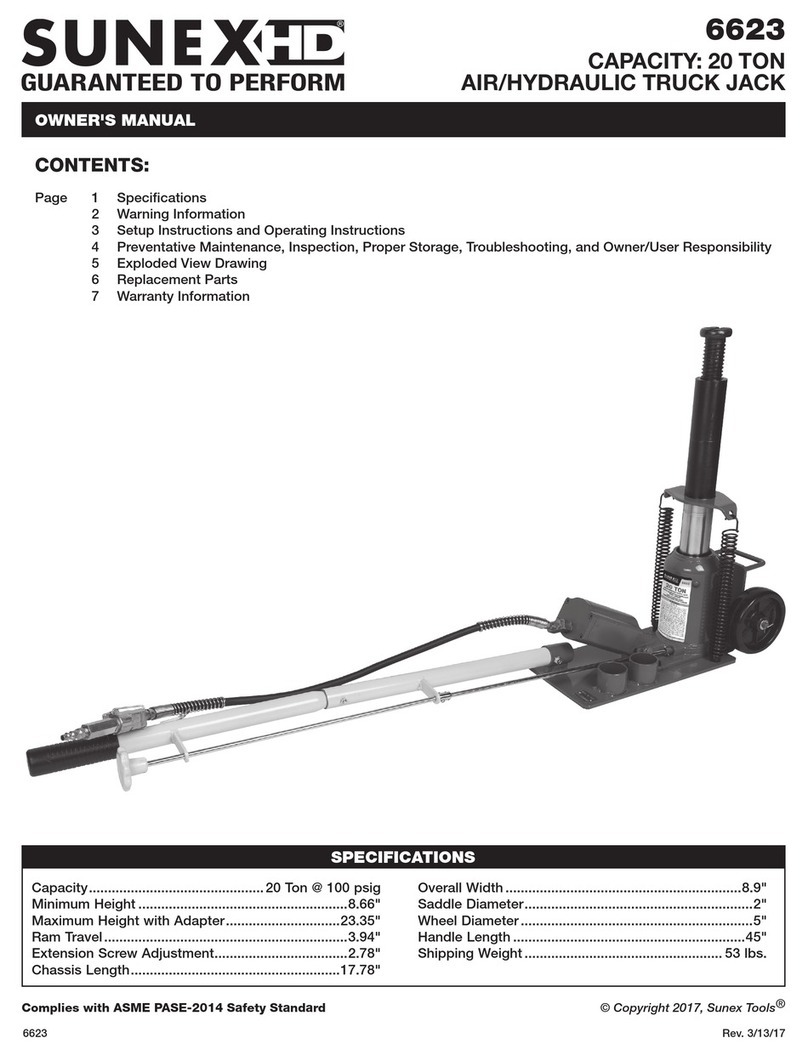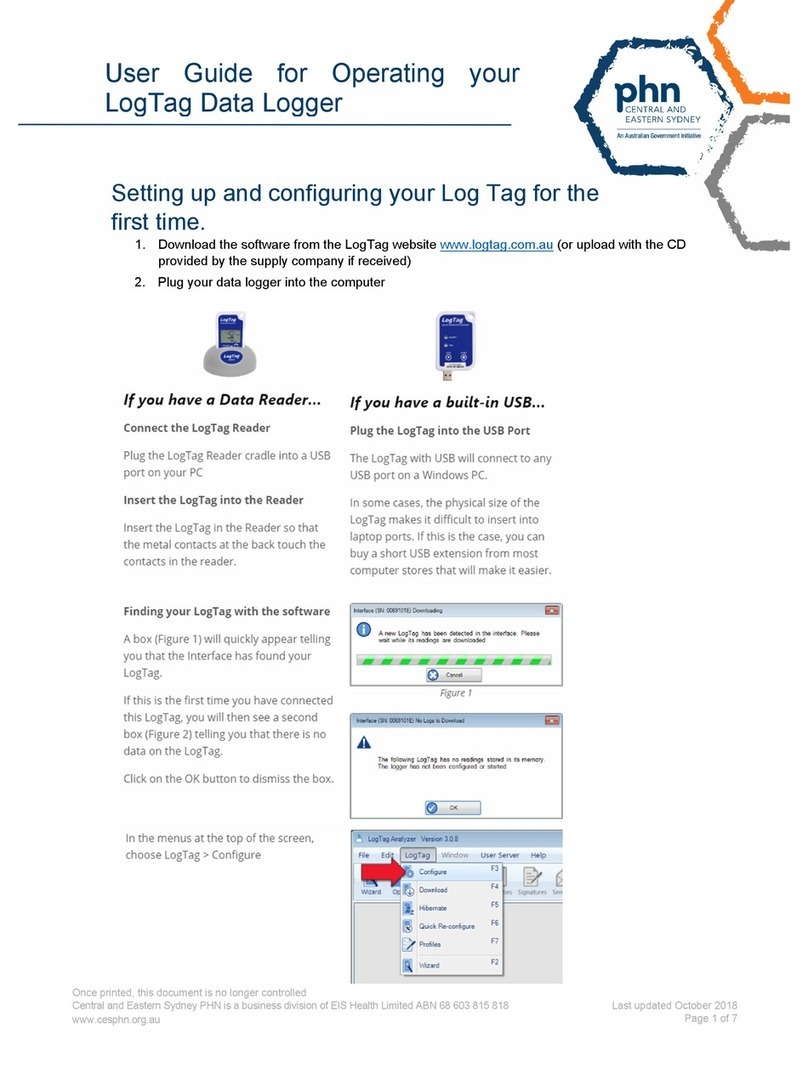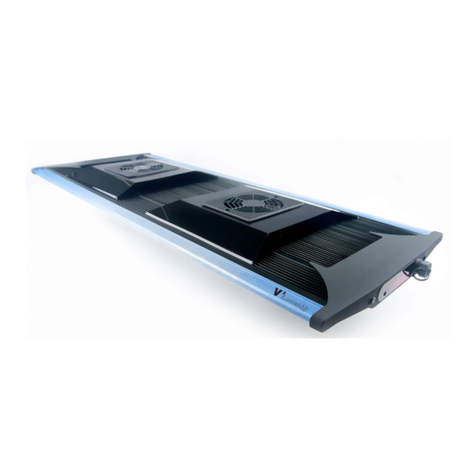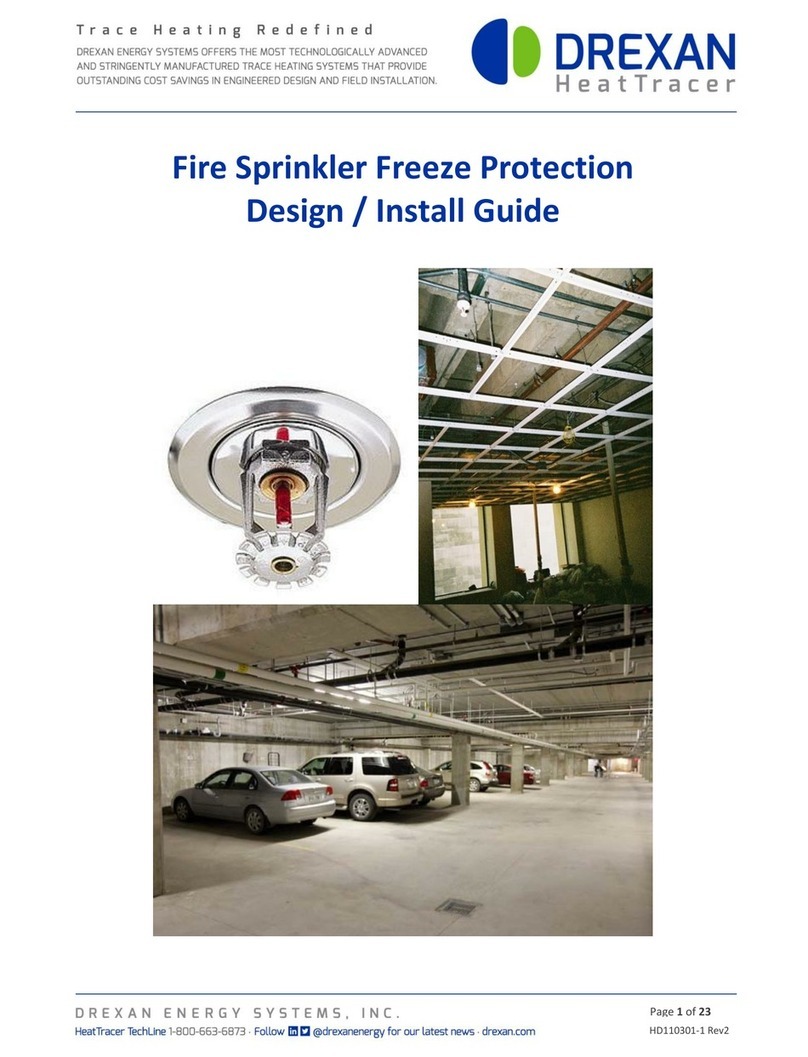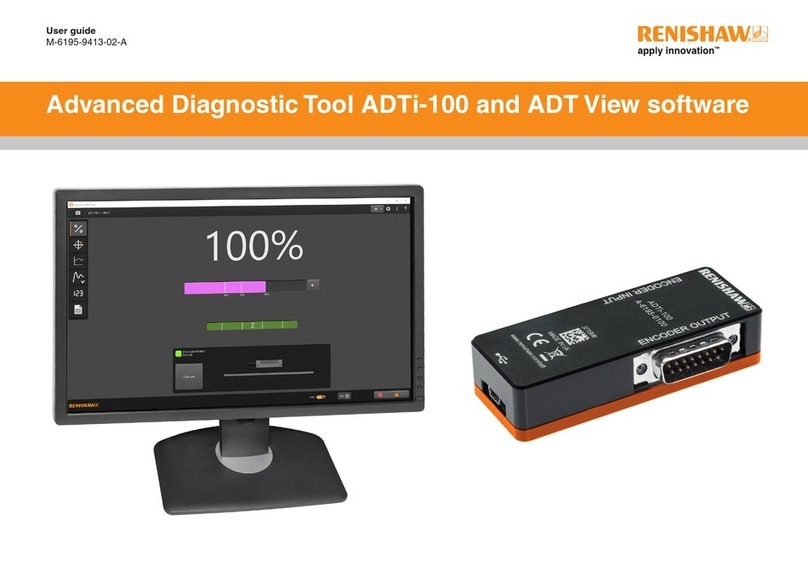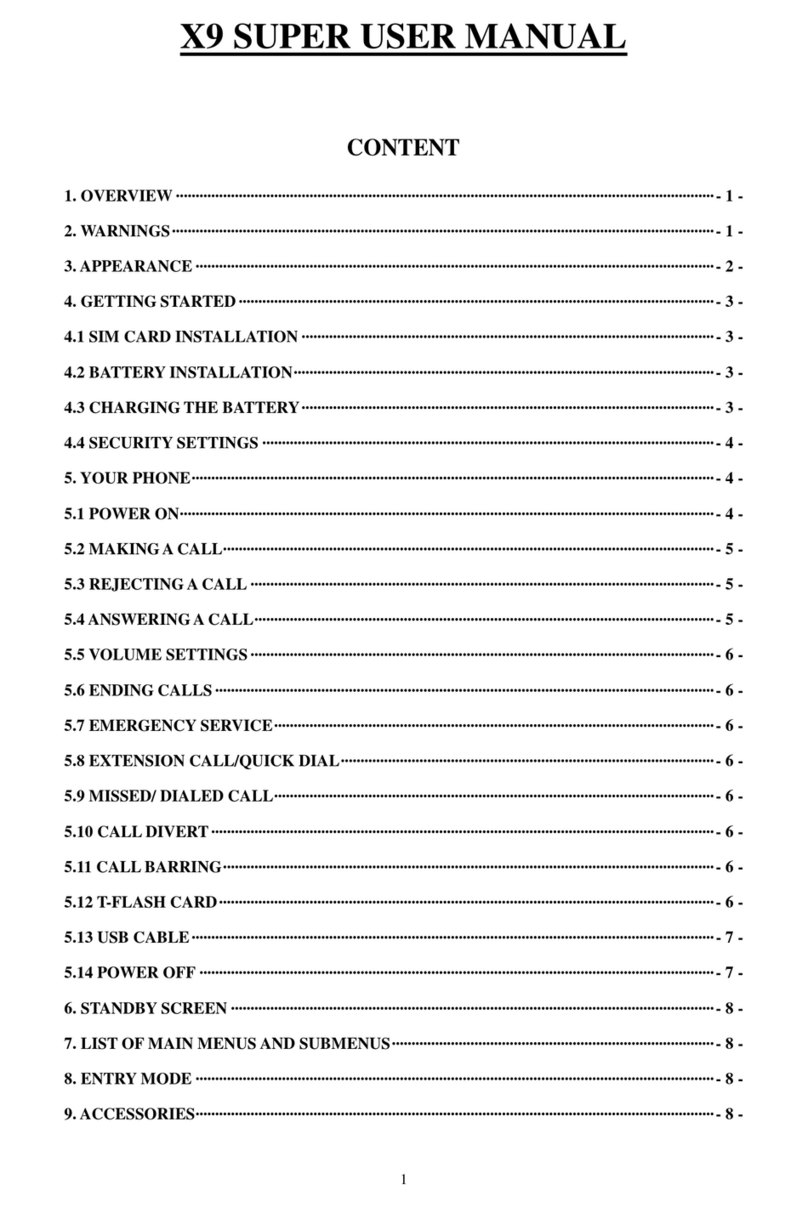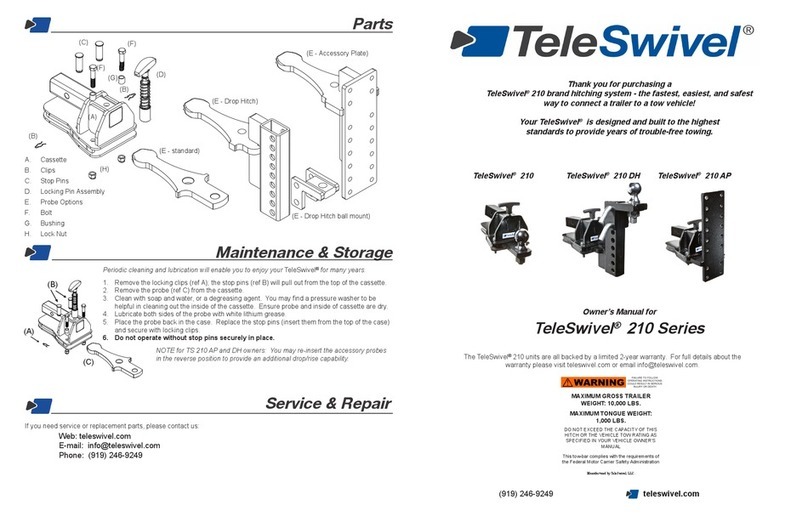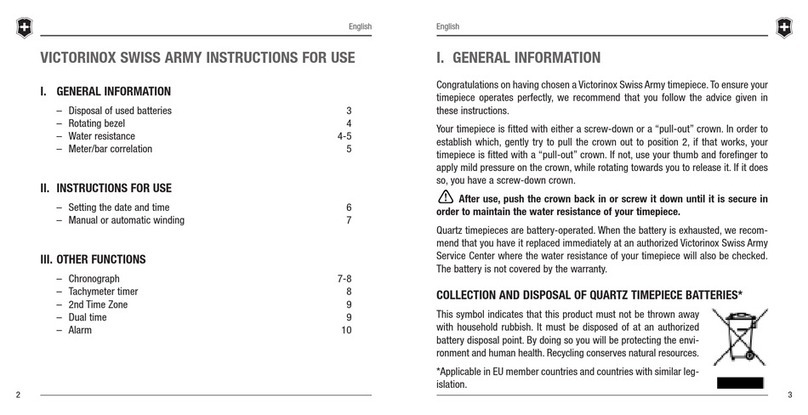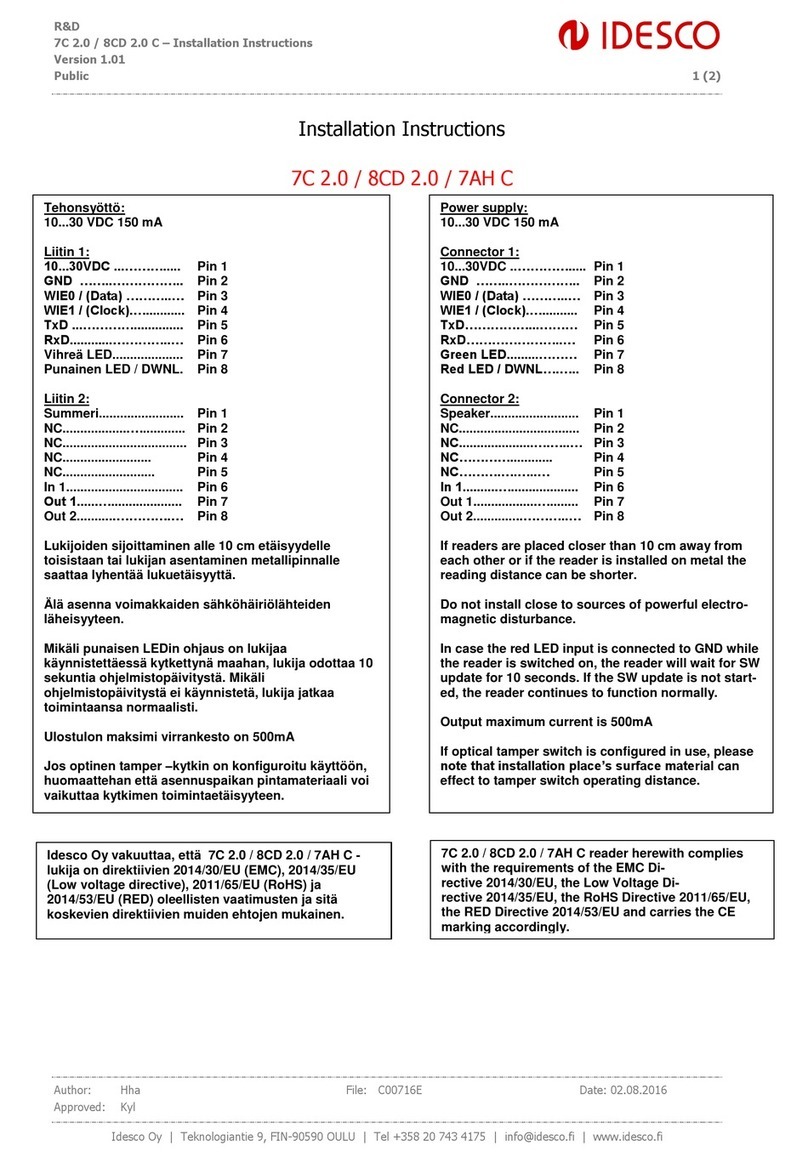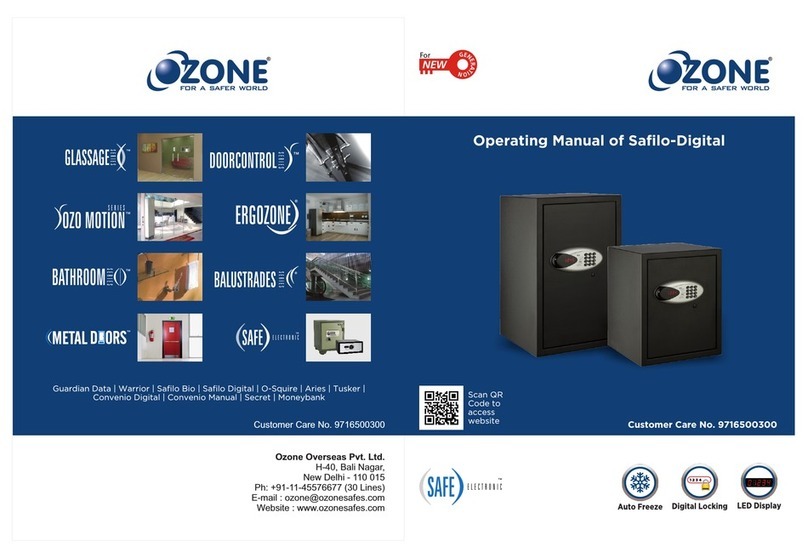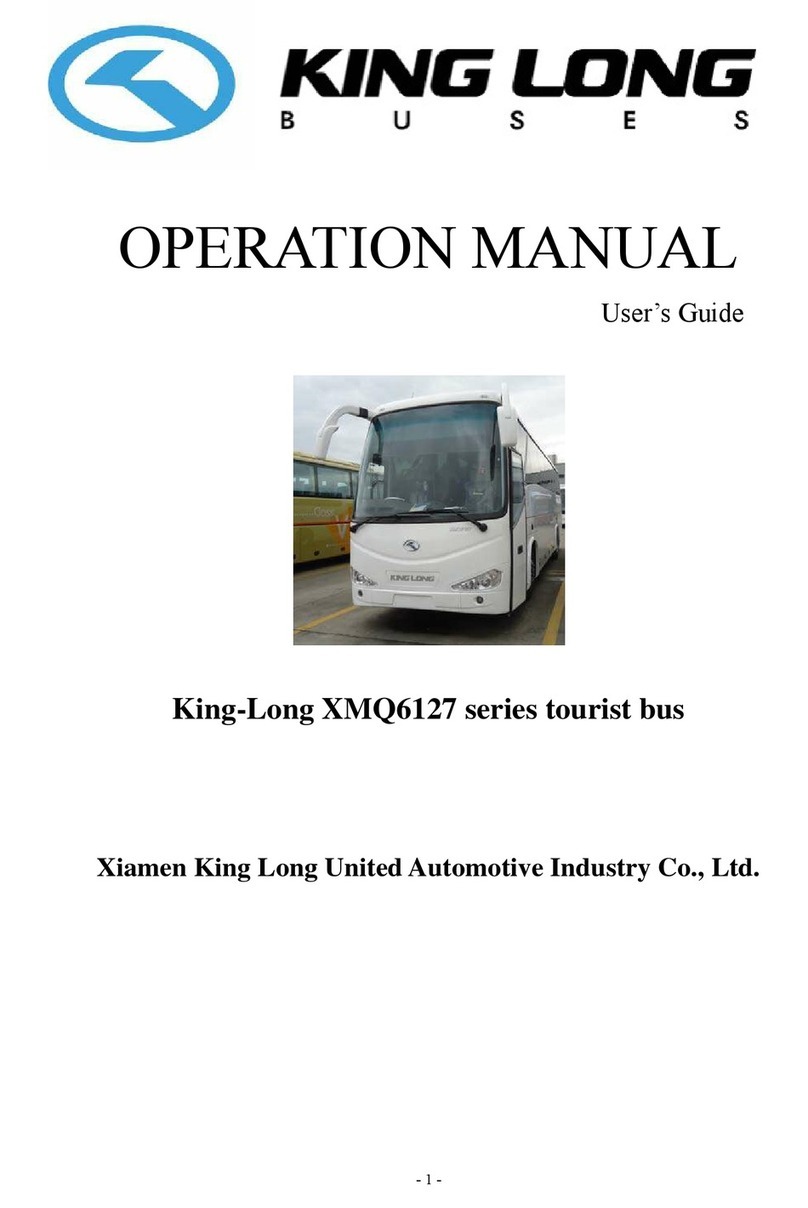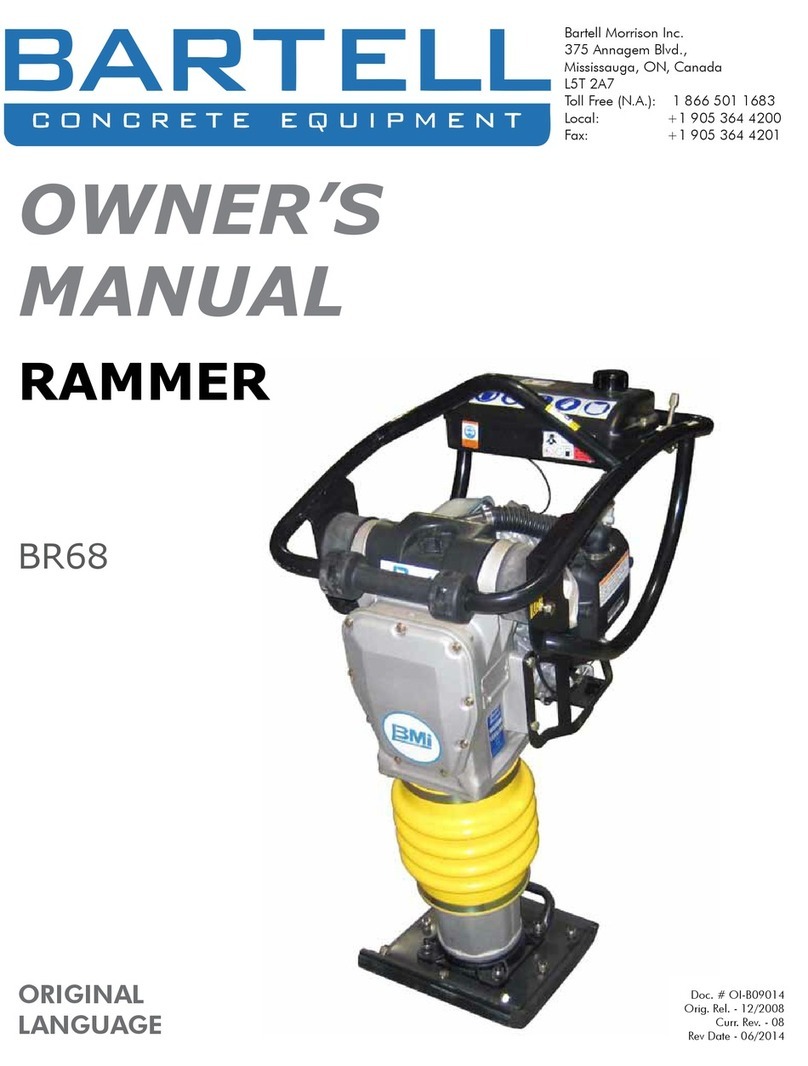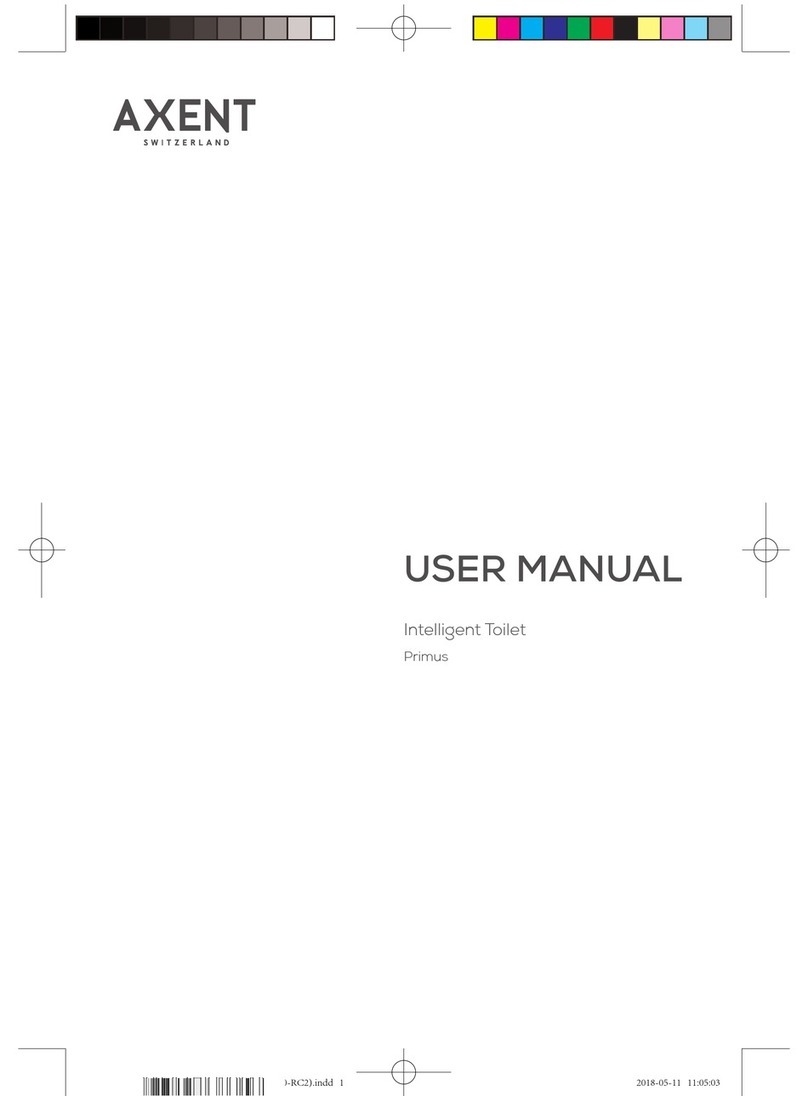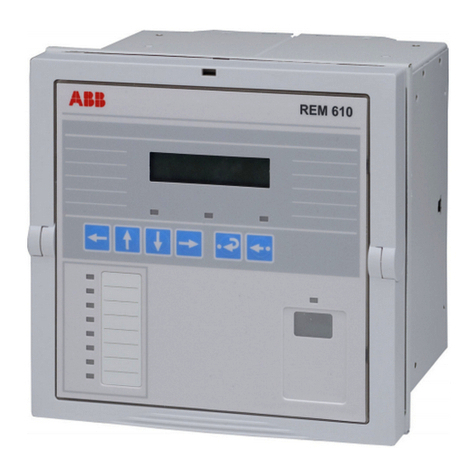Nos LT-1 User manual

P/N A5135-SNOS-1
LT-1
Kit Numbers: 05176NOS & 05176TBNOS
OWNER’S MANUAL
NOTICE: Installation of Nitrous Oxide Systems Inc. products signifies that you have read this document and have
agreed to the terms stated within.
It is the purchaser’s responsibility to follow all installation instruction guidelines and safety procedures supplied with the product
as it is received by the purchaser to determine the compatibility of the product with the vehicle or the device the purchaser
intends to install the product on.
Nitrous Oxide Systems Inc. assumes no responsibility for damages occurring from accident, misuse, abuse, improper
installation, improper operation, lack of reasonable care, or all previously stated reasons resulting from incompatibility with other
manufacturers’ products.
Nitrous Oxide Systems Inc. assumes no responsibility or liability for damages incurred by the use of products manufactured or
sold by Nitrous Oxide Systems Inc. on vehicles used for competition or racing.
Nitrous Oxide Systems Inc. neither recommends nor condones the use of products manufactured or sold by Nitrous Oxide
Systems Inc. on vehicles, which may be driven on public roads or highways, and assumes no responsibility for damages
incurred by such use.
NOS nitrous oxide is legal for use in most states when used in accordance with state and local traffic laws. NOS does not
recommend or condone the use of its products in illegal racing activities.

2
Kit Number 05176NOS, when equipped with the upgrade package P/N 15826NOS, has received an Executive Order
Exemption from the California Air Resources Board (EO #D-266). This exemption means than when equipped with this
upgrade package, your vehicle will be “Smog Legal” in all 50 states.
Kit Number 05176TBNOS has not yet been tested and therefore, has not received an Executive Order Exemption from
the California Air Resources Board.
NOTICE: The NOS Kit Number 05176NOS/05176TBNOS is not intended for use on hatchback type vehicles without the
use of NOS part numbers 16160NOS (External Aluminum Blow-Down Tube) and 16166NOS (Racer Safety
Pressure Relief Cap).
HAZARDS DEFINED
This manual presents step-by-step instructions that describe the process of installing your NOS Nitrous Oxide Injection System.
These procedures provide a framework for installation and operation of this kit. Parts are referenced by name and number to
avoid confusion. Within the instructions, you are advised of potential hazards, pitfalls, and problems to avoid. The following
examples explain the various hazard levels:
WARNING! Failure to comply with instructions may result in injury or death.
CAUTION! Failure to comply with instructions may result in damage to equipment.
NOTE: This information is important, needs to be emphasized, and is set apart from the rest of the text.
HINT: These special instructions provide a handy work tip.
NITROUS OXIDE INJECTION SYSTEM SAFETY TIPS
WARNINGS
Do not attempt to start the engine if the nitrous has been injected while the engine was not running. Disconnect the
coil wire and turn the engine over with the throttle wide open for several revolutions before attempting to start. Failure
to do so can result in extreme engine damage.
Never permit oil, grease, or any other readily combustible substances to come in contact with cylinders, valves,
solenoids, hoses, and fittings. Oil and certain gases (such as oxygen and nitrous oxide) may combine to produce a
highly flammable condition.
Never interchange nitrous and fuel solenoids. Failure to follow these simple instructions can result in extreme engine
damage and/or personal injury.
Never drop or violently strike the bottle. Doing so may result in an explosive bottle failure.
Never change pressure settings of the safety relief valve on the nitrous bottle valve. Increasing the safety relief valve
pressure settings may create an explosive bottle hazard.
Identify the gas content by the NOS label on the bottle before using. If the bottle is not identified to show the gas
contained, return the bottle to the supplier.
Do not deface or remove any markings that are on the nitrous bottle.
Nitrous bottle valves should always be closed whenever the system is not being used.
Notify the supplier of any condition, which might have permitted any foreign matter to enter the valve or bottle.
Always keep the valves closed on all empty bottles to prevent accidental contamination.
After storage, open the nitrous bottle valve for an instant to clear the opening of any possible dust or dirt.
It is important that all threads on the valves and solenoids are properly mated. Never force connections that do not fit
properly.
CONGRATULATIONS on purchasing your NOS Nitrous Oxide Injection System. Your system is composed of the highest
quality components available. It should provide many miles of trouble-free performance when used correctly. If you have any
questions regarding the performance of your system, call NOS Technical Service at 1-866-GOHOLLEY.

3
TABLE OF CONTENTS
What is Nitrous Oxide?…………………………………………………………………………………………………………...4
Do’s and Don’ts of Nitrous Oxide……………………………………………………………………………………………….4
Chapter 1 Introduction to Your NOS Nitrous Oxide Kit…………………………………………………………………….4
1.1 General Information………………………………………………………………………………………………. 4
1.2 System Requirements………………..……………….….……..……………………………….………………..5
1.3 Kit Components…………………………………………………………………………………………………….6
Chapter 2 Kit Installation………………………………………………………………………………………………………...7
2.1 Bottle Mounting Instructions…………………………………………………………………………………….7
2.1.1 Street Vehicles………………………………………………………………..………………………. 7
2.1.2 Racing Vehicles………………………………………………………………………………………. 7
2.2 Bottle Orientation…………………………………………………………………………………………………..8
2.3 Bottle Installation…………………………………………………………………………………………………..9
2.4 Spray Nozzle Installation Kit Number 05176NOS Only...………………………………………………….. 11
2.5 Solenoid and Regulator Mounting Kit Number 05176NOS only.………………………………………… 11
2.6 Solenoid and Regulator Mounting Kit Number 05176TBNOS only……………………………………… 12
2.7 Regulator and Fuel Pressure Connection………………………………………………………………….….13
2.8 Nitrous Feed Line Mounting…………………………………………………………..………………………… 13
2.9 Solenoid/Fan Spray Nozzle Hose Connection Kit Number 05176NOS only.………………………….. 13
2.10 Solenoid/Throttle Body Nitrous Line Connection Kit Number 05176TBNOS only………………….. 13
2.10.1 Fuel Pump Installation………………………………………………..…………………………….14
2.11 Electrical System Installation…………………………………………..………………………………………15
2.11.1 Electrical Installation—N2O System…………………………………………………………..….15
2.11.2 Electrical Installation—Fuel Pump………………………………………………………………. 17
2.12 Preparing for Operation………………………………………………………………………………………… 17
Chapter 3 Tuning…………………………...……………………………………………………………………………………..18
Appendix A Troubleshooting Guide…………………………………………………………………………………………...19
Nitrous Oxide Accessories……………………………………………………………………………………………………… 20
LIST OF FIGURES AND TABLES
Figure 1 Kit Numbers 05176NOS/05176TBNOS Components....…………….…..…………..………….………………. 6
Figure 2 Nitrous Bottle Siphon Tube Orientation…………………………………………………………………………...7
Figure 3 Nitrous Bottle Mounting Orientation………………………………………………………………………………..8
Figure 4 Kit Numbers 05176NOS/05176TBNOS Assembly Drawing……….………..……………….….……………… 10
Figure 5 Solenoid and Regulator Mounting—Kit Number 05176TBNOS only……………..…………………………..12
Figure 6 Solenoid/NOS Throttle Body Nitrous Line Connection………………………………………….………….…..13
Figure 7 Fuel Pump Location………………………………………………………………………….……………………..…14
Figure 8 Wiring Schematic—Nitrous System..…………………..…………………………………………………………..15
Figure 9 Microswitch Mounting Location………………………………………….……………………………………..… 16
Figure 10 Microswitch Installation…………………………………………………………………………………………..…16
Figure 11 Wiring Schematic—Fuel Pump….………………………………………………………………………………… 17
Table 1 Kit Numbers 05176NOS/05176TBNOS Parts List…….…………………...……………………………………….5
Table 2 Tuning Suggestions for NOS Kit Numbers 05176NOS/05176TBNOS…………..…..………………………… 18

4
WHAT IS NITROUS OXIDE?
NITROUS OXIDE…
…Is a cryogenic gas composed of nitrogen and oxygen molecules
…Is 36% oxygen by weight
…Is non-flammable by itself
…Is stored as a compressed liquid
…Exists in two grades—U.S.P. and Nitrous Plus:
U.S.P. is medical grade nitrous oxide; its common use is dental and veterinary anesthesia. It is also commonly used as a
propellant in canned whipped cream. U.S.P. is not available to the public.
Nitrous Plus differs from U.S.P, in that it contains trace amounts of sulphur dioxide added to prevent substance abuse.
Nitrous Plus is intended for automotive applications and is available for sale to the public
In automotive applications, Nitrous Plus and fuel are injected into the engine’s intake manifold, which produces the following
results:
Lowers engine intake air temperature, producing a dense inlet charge.
Increases the oxygen content of the inlet charge (air is only 22 percent oxygen by weight).
Increases the rate at which combustion occurs in the engine’s cylinders.
Do’s and Don’ts of Nitrous Oxide
Do’s
Read all instructions before attempting to install your NOS nitrous system.
Make sure your fuel delivery system is adequate for the nitrous jetting you have chosen. Inadequate fuel pressure or flow
will result in engine damage.
Use the recommended gauge of the wire when installing electrical system components.
Use high-quality connections at all electrical joints.
Use Teflon-based paste on pipe style fittings.
Make sure your engine and related components (ignition, carburetor, and driveline) are in proper working condition.
If nitrous is accidentally injected into the engine when it is not running, remove the engine coil wire, open the
throttle, and crank the engine 10 to 15 seconds before starting. Failure to do so can result in an explosive engine
failure.
Use your NOS nitrous system at wide-open throttle only and at engine speeds above 2500 RPM.
Install a proper engine to chassis ground. Failure to do so may result in an explosive failure of the main nitrous
supply line.
Use a high-quality fuel, as suggested in Chapter 3, Tuning Suggestions.
Don’ts
Engage your nitrous system with the engine off. Severe engine damage can occur.
Modify NOS nitrous systems (if you need a non-stock item, call NOS Technical Service for assistance)
Overtighten AN type fittings.
Use Teflon Tape on any pipe threads. Pieces of Teflon tape can break loose and become lodged in nitrous or fuel
solenoids or solenoid filters. Debris lodged in a nitrous or fuel solenoid can cause catastrophic engine failure.
Use sealant of any kind on AN type fittings.
Inhale nitrous oxide. Death due to suffocation can occur.
Allow nitrous oxide to come in contact with skin. Severe frostbite can occur.
Use octane boosters that contain methanol. Fuel solenoid failure may occur, producing severe engine damage.
Chapter 1 Introduction to your NOS Nitrous Oxide Kit
1.1 General Information
Kit Numbers 05176NOS/05176TBNOS is intended for use on 1992-1997 350 GM LT-1 engines. 125-150hp increases are
common with this kit. Torque increases of 160-200 lb./ft. over stock are common.
NOTE: Nitrous oxide injection systems that add fuel near the throttle body (“wet style”) are prone to poor mixture distribution
and fuel puddling in the intake manifold, thus frequently causing severe intake manifold backfires.
Kit Numbers 05176NOS/05176TBNOS flows fuel through the engine’s injectors (“dry style”). Necessary fuel flow is
accomplished by increasing the fuel pressure, thus increasing the fuel flow rate.

5
IMPORTANT: The stock LT-1 fuel system operates at 40-45 psi. Kit Number 05176NOS increases fuel pressure to 80-85 psi.
Always use a quality high-pressure fuel hose when installing this kit.
Driveability, fuel economy, and exhaust emissions should not be affected under normal (part-throttle) vehicle operation.
Typically, the standard 10 lb. bottle of nitrous will supply 45 sec-1 ½ minutes of operation at wide-open throttle. A full 10 lb.
bottle will weigh 25 pounds. For best performance, the bottle should be refilled when it weighs 15 to 18 pounds.
1.2 System Requirements
When used correctly, Kit Number 05176NOS/05176TBNOS will work with stock LT-1 internal engine components. To ensure
proper performance and driveline longevity, the following is suggested:
¾Manual Transmissions
If the vehicle is to be exposed to severe operating conditions, such as dragstrip use, the standard GM clutch should be
replaced with a high performance unit.
¾Automatic Transmissions
If the vehicle is to be exposed to severe operating conditions, such as dragstrip use, a reputable high performance
transmission shop should service the automatic transmission.
1.3 Kit Components
Before beginning the installation of your NOS kit, compare the components in your kit with those shown in Figure 1 and listed in
Table 1. If any components are missing, please contact NOS Technical Support at 1-866-GOHOLLEY.
Table 1 Kit Number 05176NOS/05176TBNOS Parts List
Item Description Quantity NOS P/N
(1) 10 lb. Nitrous Bottle 114745
(2) Bottle Valve Adapter (4AN) 116220
(3) Bottle Valve Washer 116210
(4) Bottle Bracket Set 114125
(5) Blow-Down Tube 116160
(6) Nitrous Spray Nozzle Adapter 113709-S
(7) Nitrous Spray Nozzle Adapter Nut 113713-S
(8) Fan Spray Nozzle (Blue) 113500
(9) Nitrous Solenoid 216020
(10) Nitrous Solenoid TEE 117242-S
(11) Solenoid Mounting Bracket 116509
(12) 4AN Nitrous Filter Fitting 115570
(13) 1/8” NPT Male x 1/8” NPT Male Nipple 117500
(14) Nitrous Pressure Regulator 115850
(15) 1/8” NPT x 3/16” Hose Barb 116244A-S
(16) 3AN Hose with 1/8” NPT Male Fitting 115060
(17) Vacuum Hose Pressure TEE 117538-S
(18) Vacuum Hose 115005-S
(19) Ratcheting Hose Clamps 516239-S
(20) Main N2O Feed Line 4AN 16 ft. 115300
(21) 4AN x 4AN 90° Fitting (for optional use) 117535
(22) #67 Flare Jet 113750-67-S
(23) Fuel Pump Bracket 115767-S
(24) Fuel Pump 115763-S
(25) Fuel Pump Sock 115765-S
(26) 1/2” Hose Barb X “GM” Fitting 115538-S
(27) 3’ x 1/2” I.D. Fuel Hose 115007-S
(28) Large Hose Clamp 416238-S
(29) 2’ x 3/8” I.D. Fuel Hose 115004-R
(30) Small Hose Clamp 416240-S
(31) Microswitch* 115640
(32) Arming (Toggle) Switch 115600
(33) 30 AMP Relay** 115618
(34) Scotch Lock Connector 115891-S
(35) Throttle Body 120360NOS
*Includes Bracket and Screws. **Includes Relay Harness. ***Wiring and Connectors also supplied.
NOTE: Kit Number 05176TBNOS will not use parts (6), (7), & (8).
NOTE: Kit Number 05176NOS does not contain part (35)

6
Figure 1 Kit Numbers 05176NOS & 05176TBNOS Components

7
Chapter 2 Kit Installation
2.1 Bottle Mounting Instructions
NOTE: Disconnect the battery ground before beginning installation.
2.1.1 Street Vehicles
Accurate calibration of your NOS nitrous system depends on the bottle remaining at a stable temperature. Mount the bottle
away from heat sources, such as the engine compartment or exhaust system, and away from windows, where the bottle is
exposed to direct sunlight. In vehicles such as Camaros and Firebirds, it is impractical to mount the bottle away from direct
sunlight. In these cases, the bottle should be covered or insulated, such as with an NOS bottle blanket (#14165).
NOS recommends that the bottle be environmentally separated from the driver’s compartment. Vehicles such as Camaros and
Firebirds do not have separate trunk compartments, so this kit includes an external blow-down tube. The safety blow-down tube
should be routed to the exterior of the vehicle (preferably under the vehicle). This procedure will prevent filling the driver’s
compartment with a cloud of nitrous oxide if the safety pressure relief cap should happen to rupture for any reason.
2.1.2 Racing Vehicles
Before mounting a nitrous bottle in a racing vehicle intended for use in sanctioned events, check with the sanctioning
association for any rules regarding this subject. Most associations require the bottle to be mounted within the confines of the
safety roll cage, with the safety pressure relief cap vented away from the driver’s compartment.
Figure 2 Nitrous Bottle Siphon Tube Orientation

8
Figure 3 Nitrous Bottle Mounting Orientations
2.2 Bottle Orientation
Bottle placement is critical to the performance of your NOS nitrous system. It is important to understand how the bottle valve
and siphon tube are assembled to properly orient the bottle in your vehicle and ensure that it picks up liquid nitrous while
undergoing acceleration. All NOS nitrous bottles are assembled so that the bottom of the siphon tube is at the bottom of the
bottle and opposite the bottle label (Figure 2).
Whenever the bottle is mounted in a lay-down position, the valve handle must be towards the front of the vehicle with the label
facing up (Figure 3A).
If the bottle is mounted vertically, the valve handle and label must face toward the front of the vehicle (Figure 3B). This
orientation will position the siphon tube at the back of the bottle where the liquid N2O will be during acceleration.
WARNING! DO NOT attempt to remove the siphon tube without completely emptying the bottle of all nitrous and
pressure.
A bottle mounted upside-down must have the siphon tube removed before use (Figure 3C). Non-siphon bottles can be specially
ordered from NOS.
If the bottle must be mounted parallel to the axles of the vehicle (sideways), the valve handle and label must be angled at
approximately 45° toward the front of the vehicle (Figure 3D). This orientation will position the siphon tube toward the rear of the
bottle.
NOTE: When using a bottle with a siphon tube, the tall bracket should be at the valve end of the bottle and the short bracket at
the bottom (Figure 3E).
The most efficient mounting is the lay-down position (Figure 3A) with the valve handle toward the front of the vehicle. This
position allows the greatest amount of liquid to be used before the siphon tube begins to pick up gaseous nitrous oxide.

9
2.3 Bottle Installation
After you have determined the location and orientation of the nitrous bottle, use the following procedure to install the bottle:
NOTE: Numbers in parentheses ( ) refer to the parts list /assembly drawing number for the component (Figure 1). Figure 4
shows the installation assembly for Kit Number 05176NOS.
1. Install the bottle nut adapter (2) and washer (3) on the nitrous bottle (1), and tighten securely.
2. Loosely install the bottle mounting brackets (4) and the vent tube (5) on the nitrous bottle.
3. Locate the bottle assembly in the desired mounting area, ensuring that the location will provide easy access to the bottle
valve, hose connection, and bracket clamp bolts to facilitate bottle changing.
4. Use the assembled bottle/bracket/blow-down tube unit as a pattern to mark and drill four 5/16” holes for the bottle bracket
bolts, a 1/2” hole for the blow-down tube, and a- 11/16” hole for the nitrous supply line.
5. Mount the brackets securely to the surface (recommended minimum of 5/16” bolts or No. 12 sheet metal screws).
6. Tighten the bracket clamps on the bottle.

10
Figure 4 Kit Numbers 05176NOS & 05176TBNOS Assembly Drawing
NOTE: Parts (6), (7), & (8) are not used when installing NOS Kit Number 05176TBNOS.

11
2.4 Spray Nozzle Installation—Kit Number 05176NOS only
1. Find a suitable location for the fan spray nozzle in the intake inlet duct. Check for interference between the spray nozzle
and the nearby components. The recommended location for the nozzle is generally 6-8 inches before the throttle body.
NOTE: On vehicles that feature mass air flow sensors, the nozzle needs to be mounted between the sensor and the throttle
body (downstream of the sensor).
2. Remove the rubber air inlet duct from the engine.
CAUTION: Debris from drilling can cause severe damage to the engine. When drilling the spray nozzle hole, position
a towel carefully to prevent debris from contaminating your engine.
3. Drill a 7/16” hole perpendicular to the inlet duct centerline through the inlet duct.
4. Insert the nitrous spray nozzle adapter (6) into the 7/16” hole with the head on the inside of the duct.
CAUTION: Severe engine damage can occur if the spray adapter/nozzle assembly works loose from the air inlet duct.
Ensure that the nitrous spray nozzle adapter is SECURELY tightened in the inlet duct.
5. Use Loctite or a similar compound on the spray nozzle adapter threads and securely tighten the spray nozzle adapter nut
(7) to the spray nozzle adapter.
6. Remove all debris from the air inlet duct.
7. Mark the discharge side of the fan spray nozzle (8) with a marker to identify the direction of the nozzle discharge.
8. Install the fan spray nozzle in the spray nozzle adapter with the discharge side pointed at the throttle body.
NOTE: The Rubber Air Inlet duct is secured in place in Section 2.10.2.
2.5 Solenoid and Regulator Mounting—Kit Number 05176NOS only
Use the following procedure to install the nitrous solenoids.
CAUTION: Do not overtighten the vise in the following procedure, or the solenoid will be damaged.
NOTE: Apply Teflon-based paste to all pipe thread fittings before assembling the solenoids and regulators.
1. Clamp one nitrous solenoid (9) base in a bench vise.
2. Thread one side of the solenoid TEE (10) into the solenoid outlet port. The 1/8” NPT port should be facing outward, as
shown in Figure 4.
3. Thread the other side of the solenoid TEE into the inlet port of the second nitrous solenoid. Rotate the second solenoid, so
that it is parallel to the first solenoid.
4. Line up the bolt mounting holes on both solenoids with the holes in the solenoid bracket (11).
5. Install the nitrous filter fitting (12) into the first nitrous solenoid inlet port.
6. Install the 1/8” NPT nipple (13) into the nitrous pressure regulator (14) inlet port (bottom).
7. Loosely thread the nitrous pressure regulator/nipple assembly into the solenoid TEE open port. If the regulator interferes
with the solenoid coils, the coils may be temporarily removed.
8. Thread the 1/8” NPT-to-3/16” hose barb fitting (15) into the regulator outlet (side port).
9. Attach the solenoid-mounting bracket to the nitrous solenoids.
10. Thread the 1/8” NPT - 3AN male fitting (16) into the second nitrous solenoid outlet port.
11. Remove the assembly from the bench vise.
12. Ensure that the 2 ft. 3AN x 1/8” NPT nitrous feed line (16) provided will reach the nitrous nozzle from the mounting location
on the driver’s side inner fender.
13. Attach the nitrous solenoid/bracket assembly to the driver’s side inner fender.

12
NOTE: It is best to mount the solenoid assembly in a location that minimizes the distance from the nitrous regulator to the fuel
pressure regulator.
2.6 Solenoid and Regulator Mounting—Kit Number 05176TBNOS only
Use the following procedure to install the nitrous solenoids.
CAUTION: Do not overtighten the vise in the following procedure, or the solenoid will be damaged.
NOTE: Apply Teflon-based paste to all pipe thread fittings before assembling the solenoids and regulators.
1. Clamp one nitrous solenoid (9) base in a bench vise.
2. Thread one side of the solenoid TEE (10) into the solenoid outlet port. The 1/8” NPT port should be facing outward, as
shown in Figure 5.
3. Thread the other end of the solenoid TEE into the inlet port of the second nitrous solenoid. Rotate the second solenoid, so
it is parallel to the first.
4. Line up the bolt mounting holes on both solenoids with the holes in the solenoid bracket (11).
5. Install the nitrous filter fitting (12) into the first nitrous solenoid inlet port.
6. Install the 1/8” NPT nipple (13) into the nitrous pressure regulator (14) inlet port.
7. Loosely thread the nitrous pressure regulator/nipple assembly into the solenoid TEE open port. If the regulator interferes
with the solenoid coils, the coils may be temporarily removed.
8. Thread the 1/8” NPT-to-3/16” hose barb fitting (15) into the regulator.
9. Attach the solenoid mounting bracket to the nitrous solenoids.
10. Thread the 1/8” NPT - 3AN male fitting (16) into the second nitrous solenoid outlet port.
11. Remove the assembly from the bench vise.
12. Ensure that the 2 ft. 3AN x 1/8” NPT nitrous feed line (16) provided will reach the nitrous nozzle from the passenger’s side
cowl mounting shown in Figure 5.
13. Attach the nitrous solenoid/bracket using the 1/4”-20 screw, nylon lock nut, and 1/4” washers, as shown in Figure 5.
NOTE: It is best to mount the solenoid assembly in a location that minimizes the distance from the nitrous regulator to the fuel
pressure regulator.
Figure 5 Solenoid and Regulator Mounting—Kit Number 05176TBNOS only

13
2.7 Regulator and Fuel Pressure Regulator Connection
1. Remove the vacuum line from the fuel pressure regulator.
2. Install the vacuum line from the fuel pressure regulator onto the bypass “T” (17) center leg (denoted by the blue nut). See
figure 4 on page 10.
3. Measure and cut a length of vacuum hose (18) to run from one pressure “T” port to the fuel pressure regulator.
4. Measure and cut a length of vacuum hose to run from the remaining pressure “T” open port to the hose barb fitting on the
nitrous pressure regulator (11).
5. Clamp the vacuum hose connections using the ratcheting hose clamps (19).
2.8 Nitrous Feed Line Mounting
HINT: Following the fuel lines along the left side of the vehicle and entering the engine bay near the master cylinder works well.
1. Determine the route for your nitrous feed line to follow. Ensure the path is clear of exhaust system, suspension, steering,
wheels, electrical lines and components, and tires.
2. Feed the main nitrous supply line (20) along the proposed route.
3. If it is necessary to support the nitrous supply line under the vehicle, use 1/2” Tinnerman clamps or nylon tie-wraps to
support the line securely.
4. Attach the nitrous supply line to the nitrous bottle valve adapter (3). Use the optional 4AN to 4AN 90° fitting (21), if
necessary.
WARNING: Nitrous oxide can cause death if inhaled. Severe frostbite can occur if allowed to contact the skin. Always
point the nitrous line opening away from people when purging the line.
5. Purge the nitrous supply line.
A. Wrap the end of the nitrous line with a rag and hold securely.
B. Point the opening away from people.
C. Briefly open the bottle valve.
6. Attach the nitrous supply line to the nitrous solenoid inlet port. Use the optional 4AN to 4AN 90° Fitting (21), if necessary.
2.9 Solenoid/Fan Nozzle Nitrous Line Connection—Kit Number 05176NOS only
1. Place the #67 flare jet (22) in the spray nozzle (8) inlet.
2. Connect and tighten the 3AN line (16) to the solenoid outlet and from the spray nozzle inlet.
2.10 Solenoid/NOS Throttle Body Nitrous Line Connection—Kit Number 05176TBNOS only
1. Place the #67 flare jet (22) into the flare jet fitting (supplied with the NOS throttle body), as shown in Figure 5.
2. Connect and tighten the 2 ft. 3AN x 1/8” NPT line (16) to the solenoid outlet and from the NOS throttle body flare jet fitting
inlet, as shown in Figure 6.
Figure 6 Solenoid/NOS Throttle Body Nitrous Line Connection

14
2.10.1 Fuel Pump Installation
IMPORTANT: The following procedure requires the disconnection of fuel lines underneath the vehicle. Empty the vehicle of
fuel before attempting to disconnect the fuel lines. If the fuel tank is not emptied, fuel siphoning may occur,
resulting in a major fuel leak. Please, NO SMOKING when working in, on, or around fuel lines or systems.
1. Trial fit the fuel pump (24), fuel pump bracket (23), and sock (25) assembly to the driver’s side floor pan of the vehicle.
Make sure that the assembly is higher than the lowest part of the rear frame rail and below the rear axle brake line. Refer
to Figure 5 for suggested mounting location.
2. Remove the driver’s side rear seat bottom, pull the carpet out from under the side panel (arm rest/speaker cover panel). Lift
the carpet to gain access to the fuel pump mounting location.
3. Using the fuel pump/fuel pump bracket and isolator assembly as a template, mark and drill four 3/8” isolator mounting holes
in the floor pan.
4. Install the fuel pump assembly.
5. Replace the carpet and seat cushions.
6. Bleed off the residual fuel pressure at the fuel rail test port. Refer to Figure 6 for the location of the fuel rail test port.
WARNING: The fuel system in LT-1 powered vehicles is designed to retain a fuel pressure of approximately 30 psi
after the engine has been shut off. Be sure to bleed off fuel pressure before loosening the fuel lines.
7. Disconnect the plastic fuel line from the inlet of the fuel filter.
8. Remove the plastic retaining clip from the inlet of the fuel filter and install it on the fuel line hose barb (26).
9. Install the fuel line hose barb in the end of the plastic fuel line.
10. Connect the fuel line hose barb to the inlet side of the fuel pump using the 1/2” rubber fuel hose (27). Double clamp both
ends of the hose with large hose clamps (28).
11. Connect the outlet side of the fuel pump (the side with electrical connectors) to the inlet side of the fuel filter using the 3/8”
rubber fuel hose (29). Double clamp both ends with the small hose clamps (30).
NOTE: Make sure that the fuel hose is pushed on far enough that the hose passes over the barb on the fuel filter inlet.
Lubricating the inside of the hose with transmission fluid will greatly ease this operation.
12. Use nylon tie-wraps to support the rubber fuel hose. Do not overtighten or crush the hose with tie-wraps. Ensure that the
hose is snuggly up against the existing fuel lines.
Figure 7 Fuel Pump Location

15
2.11 Electrical System Installation
Use the following procedure and refer to Figure 8 for the electrical system installation.
WARNING! Death or injury may occur from working on a charged electrical system.
2.11.1 Electrical Installation—N2O System
1. Disconnect the car battery at the ground cable (if not already done).
WARNING! Binding or dragging of the throttle linkage will create a potentially dangerous stuck-throttle condition.
Ensure that the microswitch does not interfere with normal throttle linkage operation.
2. Install the throttle microswitch (31) on the throttle body, so the microswitch is triggered by the throttle linkage at wide-open
throttle only. Figure 9 shows the suggested mounting configuration.
HINT: The microswitch may be mounted to the bracket in a variety of positions and on either side of the bracket. The bracket
may be bent to suit the application.
A. Mount the throttle microswitch on the intake manifold so that the throttle linkage movement triggers the microswitch.
B. Adjust the microswitch to trigger at wide-open throttle by adjusting the microswitch’s position to ensure the actuation
arm of the microswitch “clicks” at the same point your throttle linkage reaches wide-open throttle against the throttle
stop (Position 10A).
C. Ensure that the throttle and switch can reach the activation position by using the accelerator pedal: Slowly press the
throttle to the floor while you listen for the “click” of the microswitch (Position 10B).
Figure 8 Wiring Schematic—Nitrous System

16
Figure 9 Microswitch Mounting Location
Figure 10 Microswitch Installation
3. Install the toggle arming switch (32) in the vehicle interior, within easy reach of the driver.
4. Connect terminal #1 (labeled “volts”) on the arming switch to an ignition switched +12V source, using the fused red wire
provided.
NOTE: When selecting an ignition switched +12V source, ensure that your source is capable of handling the amperage of the
fuse provided with the kit.
5. Connect terminal #2 (labeled “accessory”) of the arming switch to one post of the throttle microswitch (either post will do),
with the blue wire provided.

17
6. Connect terminal #3 (labeled “ground”) of the arming switch to the ground. (You may elect to skip this step. If you do so,
the light in the arming switch will not illuminate when the system is armed).
7. Connect the open post of the microswitch to one wire from each solenoid (either wire will do, the solenoids are not
polarized) using the blue wire provided.
8. Connect the open wire from each solenoid to the ground.
2.11.2 Electrical System Installation—Fuel Pump
1. Remove the cover from the spare tire well in the cargo area of the vehicle.
2. Select the mounting location for the 30 AMP relay (33) and the relay harness in the spare tire well. Secure the relay in
place.
CAUTION: If you intend to secure the relay in place with a screw, be sure that the screw hole does not penetrate any
critical components. Do not drill any holes in the rear shock absorber mounts.
3. Connect the fuel pump positive (+) pole to the blue wire from the 30 AMP relay harness.
4. Connect the green relay wire to the chassis ground.
5. Connect the red relay wire to the factory fuel pump power wire (wire should be gray in color), using the scotch lock
connector (34).
6. Connect the orange relay wire to the battery or vehicle accessory power supply (should be located on the right side front
fender well). If connecting to the accessory power supply, make sure that the circuit will support the additional 7 AMP draw
required by the fuel pump.
NOTE: A convenient route for the power supply wire is to have it follow the nitrous supply line to the front of the vehicle.
7. Replace the spare tire well cover.
8. Reinstall the rubber air inlet duct.
Figure 11 Wiring Schematic—Fuel Pump
2.12 Preparing for Operation
1. Start the vehicle.
2. Examine the auxiliary fuel pump to ensure operation. The fuel pump should run whenever the vehicle is running. If the
pump is inoperable, refer to Appendix A, Troubleshooting Guide.
3. Open the nitrous bottle valve. There should be no change in the engine idle speed or exhaust tone. If either change is
noted, refer to Appendix A, Troubleshooting Guide.
4. Inspect the nitrous lines and fittings for leaks. You can do this by mixing soap and water and spraying it on the lines and
fittings. You will see bubbles come up, if there is a leak.
5. ENJOY!

18
Chapter 3 Tuning
Your NOS Kit Numbers 05176NOS / 05176TBNOS are factory set to work with stock engine settings. For maximum
performance, follow the settings listed in Table 2.
Table 2 Tuning Suggestions for NOS Kit Numbers 05176NOS & 05176TBNOS
Configuration N2O Jetting Fuel Quality Ignition Timing Plugs
05176NOS
05176TBNOS .067” 92+ octane Stock Stock to
1step cooler

19
Appendix A Troubleshooting Guide
The troubleshooting chart on the following pages should help determine and rectify most problems with your installed NOS
system. If you still need assistance determining or fixing problems, call the NOS Technical Support at 1-866-GOHOLLEY.
PROBLEM POSSIBLE CAUSES DIAGNOSTIC PROCEDURE CORRECTIVE ACTION
Bottle valve not fully opened. Check bottle valve. Open valve fully.
Plugged nitrous filter. Inspect filter. Clean/replace filter.
Low bottle pressure. Check bottle temperature. Set bottle temperature to 80°
to 85°F.
Inadequate nitrous supply. Weigh bottle. Fill bottle. 1-800-99-REFILL
Excessive fuel pressure. Measure the pressure during
acceleration with the nitrous
operating.
Regulate pressure down.
Loose nitrous solenoid
wiring. Inspect the solenoid wiring. Repair wiring.
Engine runs rich when
system is activated.
Malfunctioning nitrous
solenoid. Disconnect the solenoid wires
from the blue relay. Connect the
12V test light to the battery (-).
Turn the arming switch ON.
Manually set the microswitch ON.
Use the test light probe to check
for power at the solenoid.
Replace the solenoid.
*Below 70°F ambient, NOS
Bottle Heater #14164 is
recommended to maximize
performance.
Bottle valve closed. Check bottle valve. Open valve fully.
In-line fuse blown Check fuse. Replace fuse.
Plugged nitrous filter. Inspect filter. Clean/replace filter.
System wired incorrectly. Compare nitrous wiring to
schematic (Figure 7). Wire system per instructions.
Loose ground wire(s). Connect 12V test light to battery
(+) terminal. Check for continuity
at grounds shown in Figure 9.
Tighten/repair loose
ground(s).
Malfunctioning arming
switch. Turn arming switch ON. Connect
12V test light to battery (-)
terminal. Check for power at red
wire on power relay switch.
Replace arming switch.
No change in performance
when system is activated.
Malfunctioning throttle
microswitch. Temporarily disconnect power
relay green wire from microswitch.
Connect 12V test light to battery
(+) terminal. Manually set the
microswitch ON. Check for
continuity at open terminal of
microswitch (Figure 9).
Replace throttle microswitch.
Excessive ignition timing. Check ignition timing. Set timing to factory settings.
Inadequate octane fuel. Use higher octane fuel.
Spark plug heat range too
high. Reduce spark plug heat
range (max. 2 steps).
Engine detonates mildly
when system is activated.
Too much nitrous flow. Reduce nitrous jetting.
Inadequate fuel delivery due
to: Plugged fuel filter. Inspect fuel filter. Clean or replace fuel filter.
Crimped fuel line. Inspect fuel line. Replace crimped line.
Engine detonates heavily
when system is activated.
Weak fuel pump. Install fuel pressure gauge, such
as NOS P/N 15931. Run engine
under load at wide-open throttle,
with system activated.
Repair/replace fuel pump.
Excessive spark plug gap. Inspect spark plugs. Set spark plug gap at 0.030
to 0.035”
High-RPM misfire when
system is activated. Weak ignition/ignition
component failure. Inspect components (plug wires,
distributor cap, etc.) Replace worn components.
Inadequate supply of
nitrous. Check bottle weight. Replace bottle.Surges under acceleration
when system is activated. Bottle mounted incorrectly. Compare bottle position and
orientation to instructions. Mount or orient bottle
correctly.

20
Nitrous Oxide Accessories
To maintain optimum system performance on cold days, a Bottle Heater (P/N 14164NOS) is a must.
To maximize the efficiency of the system, a Bottle Blanket (P/N 14165NOS) is also suggested.
10-20 lb. Bottle Heater P/N 14164NOS 10 lb. Bottle Blanket P/N 14165NOS
EPA/CARB “Smog Legal” Package P/N 15826NOS Remote Bottle Valve P/N 16058NOS
When installed in conjunction with your 05176NOS kit, the EPA/CARB “Smog Legal” Package P/N 15826NOS, will make your
nitrous kit Emissions Legal in all 50 states.
The Remote Bottle Valve, P/N 16058NOS is the perfect convenience accessory—electronically turns nitrous bottle on and off
with the flick of a switch. It is also great as a safety shut-off valve. It operates on 12V DC. The complete kit includes hardware
and installation instructions.
To order, contact your local dealer.
NOS Technical Support
Phone: 1-866-GOHOLLEY
Fax: 1-270-781-9772
For online help, please check the Tech Service section of
our website: www.holley.com
Refills: 1-800-99-REFILL (1-800-997-3345)
A5135-SNOS-1
Date: 03-08-01
This manual suits for next models
2
Table of contents
Other Nos Other manuals
